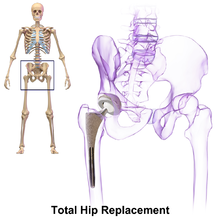By MICHAEL TOMSIC of WFAE via Kaiser Health News
North Carolina is overhauling its Medicaid program. The governor and state lawmakers are using a mixture of healthcare models to put the major players — doctors, hospitals and insurers — all on the hook to keep rising costs in check.
For many of the Republicans who control the state legislature, the reason for the change is simple: budget predictability.
“For years and years and years, Medicaid has been considered the budget Pac-Man that eats up all the dollars that people in this chamber would like to see spent on many, many other things,” Rep. Bert Jones said during the North Carolina House’s debate of the bill last month. Gov. Pat McCrory signed the overhaul into law on Sept. 23.
The state, which has not expanded Medicaid under the health law, struggled with huge Medicaid cost overruns from 2010 through 2013. That sent lawmakers looking for a better way to manage it, even though a signature part of the program has won national awards for quality and cost.
The lawmakers settled into two camps: One camp wanted to use a managed-care model, which basically means paying large insurance companies a specific amount per person covered and relying on the companies to contain costs.
“The alternative idea was to contract with what are called accountable care organizations,” said Wake Forest Prof. Mark Hall, “which is a newly emerging idea both at the state level and the federal level to organize systems of healthcare finance and delivery that are led by doctors and hospitals.”
The federal government is pushing that model for Medicare, the government insurance program for the elderly. The idea is to put the doctors and hospitals in charge of the health of a certain population of people. If they can provide care that keeps people healthy and saves money, doctors and hospitals can share some of that savings.
Some state lawmakers worried that the doctor-and-hospital model wouldn’t save enough money. Others worried the insurance company model would skimp on care. So they settled on a mixture of both.
Will that create “a Frankenstein’s monster?” That’s the question Hall, the Wake Forest professor, asked earlier this year.
“We proposed the thought that hybridizing these two separate ideas might be freakish, but in fact, I don’t think it is,” he said. “I think it’s actually a very sound and carefully thought-out use of the best of both models.”
Outside of North Carolina, Oregon is also contracting with both MCOs and ACOs, and a few other states are exploring how to encourage provider organizations to play a bigger role in Medicaid managed care.
In the meantime, North Carolina is drawing from the managed-care/insurance company model to change how it pays for Medicaid.
As of now, doctors bill Medicaid after they provide services, so the incentive is to provide more services. In the new system, the state will set budgets up front for whomever it puts in charge of managing care. If those managers go over budget, they’re on the hook – not the state.
That’s becoming the standard approach to payment, says Dan Mendelson, CEO of consulting firm Avalere Health.
“Most states contract for Medicaid through managed care because states don’t want open-ended financial liability,” Mendelson said.
Normally, those states contract with insurance companies. But here’s where the doctor-and-hospital model comes in. North Carolina will open up its bids to insurance companies and doctor-and-hospital systems. It will also set up quality metrics to track how they do.
Game on, says Julie Henry of the North Carolina Hospital Association.
“We’re moving in this direction in other arenas in healthcare, not just for the Medicaid population, but for commercially insured patients and for Medicare patients,” she said.
Henry points out some doctor-and-hospital systems in North Carolina are already meeting quality metric standards and saving money under Medicare. Some insurance companies are posting similar results.
Patient advocates say one system isn’t necessarily better than the other.
“We think it’s important to focus on not just who we hand a big bucket of money to, but what are the rules for spending that money,” said Corye Dunn, of Disability Rights North Carolina.
She says making sure the quality metrics are effective will be a crucial part of the overhaul process.
Also, lawmakers set a cap of 12 percent for how much money can go toward administrative costs and profits.
“The challenge lies in the fact that Medicaid is already a very lean program, and there’s just not a lot of fat to cut out there,” said Joan Alker of the Georgetown University Center for Children and Families. “The concern is, will the managed care company save money the right way or the wrong way?”
Some worry the risks of the overhaul outweigh the benefits. Cost overruns have not been a problem the past two years. And many in North Carolina’s medical community take pride in effective parts of the old program.
A Republican legislative leader on healthcare policy, Rep. Nelson Dollar, voted against the overhaul. And Democratic Rep. Gale Adcock, a nurse practitioner from Wake County, told other lawmakers to consider a guiding principle in healthcare.
“First, do no harm,” she said on the House floor. “I’m very fearful that if we pass this bill, we will do harm.”
The version that passed will change the award-winning part of the program, called Community Care of North Carolina. Community Care is a network of doctors, nurses and pharmacists who coordinate care for roughly 80 percent of Medicaid patients. A recent state audit found that Community Care has been saving the state money and improving patient outcomes.
As insurers and hospital systems take over those functions, Community Care President Dr. Allen Dobson says his organization will look to partner with them.
“We expect we’ll play a fairly significant role,” Dobson said. “It will be different. We may move from having one customer, which has been the state, to having multiple customers.”
One of the Republicans who led the overhaul effort, Rep. Donny Lambeth, says Medicaid is not broken in North Carolina. But he says as health care evolves, the state needs to keep up.
“Fact is, we can actually do better in North Carolina for these Medicaid beneficiaries,” Lambeth said on the House floor. “Do you think quality in North Carolina across all the providers is equal and good? I can tell you it is not.”
Lambeth says the new quality metrics will make it easier to track that. He says it’ll take three to four years to get federal approval and implement the changes.
This story is part of a reporting partnership that includes WFAE, NPR and Kaiser Health News








